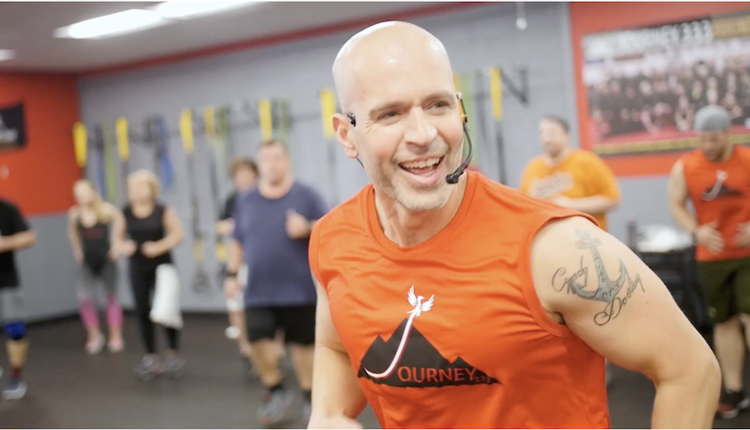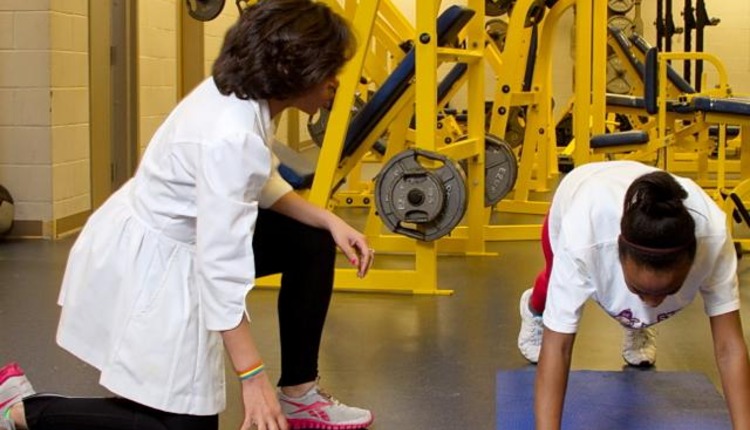
Sarah Apgar has worn many hats throughout her life as an All-American collegiate athlete, US Army veteran, volunteer firefighter, EMT, fitness professional, business executive, wife to Ben Smith, and mom to two daughters, Emory (5) and Arlynn (3).
Woven in and out of whatever role she takes on, she has been able to play to her strengths as a natural-born leader, athlete and problem- solver who thrives in a team environment.
She is founder of FitFighter and the brains behind the FitFighter Steelhose, a product she originally designed to train firefighters better for the rigors of the job.
In 2020, Apgar presented her product on ABC’s Shark Tank and landed a $250,000 investment with KIND founder and Executive Chairman Daniel Lubetzky. It was the financial support she needed to extend the reach of her unique product. Now, the FitFighter Steelhose, an all-in-one workout tool, is available to everyone, everywhere and the FitFighter brand has exploded.
We recently chatted with Sarah to learn more about her experiences, what motivates her and what the future holds for her and the FitFighter team.
How did you get started in the fitness industry?
I originally was an athlete, growing up all through my childhood as an elite gymnast. I moved on to field sports in high school and became a two-time All-American rugby fullback at Princeton University. I also was in the Reserve Officer Training Corps program for the Army.
I got my first certification as a personal trainer and group fitness instructor just shy of a decade ago because I started to take an interest in training and performance when I later joined the volunteer fire service. I wanted more of a science-based background versus just being an athlete with an interest in being fit and feeling great. I originally did the American Council on Exercise (ACE) personal trainer and group fitness instructor certifications. Then I started to actually take on a couple of clients who were high school athletes and also prepared and facilitated fitness programming in our volunteer firehouse.
I never intended for this to be my profession where I would be training clients or groups or teams. I really intended to just broaden my science-based understanding and my level of experience with something that had always woven itself in and out of my professional life as an athlete, a soldier, a platoon leader, a volunteer firefighter and someone just interested in training and teaching and coaching for people of all ages.
Have you had a mentor, or someone you’ve look up to?
Yes, I have had many mentors in my career, but the one that I would focus on is Colonel Michael Teague, a lieutenant colonel when I was joining the 52nd Engineer Battalion. I always felt that Colonel Teague was someone who took a personal interest in his young leaders. He was able to be firm while also being caring. He had this unique balance of never raising his voice, but making it very clear if you had done something that was a big mistake, or if something needed to be changed. And I always really respected the way he was able to communicate very clearly and with conviction in ways that were also caring and showed compassion.
I think that’s why I’ve tried to do that with my teams throughout my career since the military, which has been almost 20 years at this point. I try to lead with love and compassion and also recognize that when you’re a mentor and a leader, you are also responsible for ultimately everything that your team succeeds and fails to do, and that requires ensuring mistakes are highlighted and corrected and problems are solved together and that the people you lead have the mentorship they need as they grow as humans and professionals.
I would say the piece of advice that’s been instrumental to my success is to lead with compassion, but realize that everything you do is ultimately your responsibility if you’re the one who’s in charge.
What is the one principle you’ve always lived by?
The principle that remains my north star throughout my life is to bring my love, light and energy with me and sprinkle it everywhere I go. I had a friend who worked with me during the time I was launching FitFighter and on Shark Tank, and he rephrased that and said that my principle is to sprinkle steel wherever I go, and I loved that because steel absolutely is a manifestation of me personally in that inner steel and outer shine has become one of our tagline of FitFighter: “To find your inner steel so you can release your outer shine.” So if I were to be able to use my own tagline, that is my principle.
But really, in more casual terms, it’s sprinkling my love, light and energy with me wherever I go because that is definitely why I was put on this earth… walking into the grocery store and flashing a smile and making someone’s day a little bit better.
If you could give one piece of advice to your younger self, what would it be?
My piece of advice would be something that comes from Todd Durkin, and that is that there are infinite forms of wealth. I say this not because I feel like I was focused narrowly on one kind of financial wealth in my life because certainly I have been raised with the unconditional love and influence of all the different kinds of wealth there are, personal and professional and spiritual and financial. But I’m not sure that I fully appreciated what that meant in the way you can live day to day and make choices and not be constantly striving towards what felt like one narrow kind of achievement, (i.e. getting good grades, going to the right school, doing and saying the right thing, etc.).
I think I’ve always been true to myself as a person, but I also think that I have had such a richness added to my life in just thinking more deliberately about all the different kinds of wealth that there are and how we can help people to recognize that in themselves.
In your opinion, what is the greatest opportunity in the fitness industry right now?
The greatest opportunity in the fitness industry right now is for us to reinvent ourselves and reimagine ourselves.
We have grown the awareness to health and wellness and fitness because we have grown an industry that provides people with thousands of ways for them to access and engage in sport and movement and exercise.
But we have also created entire business models around the idea that people will own gym memberships that they never use. And if we really look ourselves in the mirror, we will recognize what that’s done is given people the sense of fitness as something they have to squeeze into a 45-minute period in their day. And I think in doing that, we have really led people astray in the way they should think about their strength and their health throughout their day.
After a global pandemic, when people have realized the lifesaving power of a healthy lifestyle, we have a huge opportunity to engage with people and with each other in a totally different way and celebrate this. We have the opportunity to reinvent our business models, reinvent our messages and reinvent the way that we think about fitness.
What is in your future one year from now and five years from now?
In my future one year from now is focusing on two things. Number one, putting Steelhoses in the hands of a million people in this country. That’s a lofty goal in 12 months, but it’s absolutely doable — and to put this magic wand in people’s hands with the spirit of service that is in its roots is what then gives people this symbol of strength and this reimagining of strength.
And once the Steelhoses are in their hands, then we have an opportunity to begin to communicate differently as people and as micro-communities of people that all share a common long-term goal, which is to lead a happier and healthier life — one in which we can accomplish the goals that are in our everyday mission and care for the people who we love.
I’d also love it if we were able to have an affiliation with some of the major enterprises and institutions in the country, such as the United States Army. I would love in five years to have an official affiliation between firefighters and the Army that establishes us as a leader in strength training for those who serve our country.
Five years is a long time. But in five years, I want FitFighter to be a billion-dollar company, not because of the focus on the value but on the wealth that we will bring to people. Everybody aged eight to 80 should have a Steelhose in hand. And I believe that we will do that and will then start to develop other equipment, products and ideas that flow from our training philosophy and our movement applications. The other Fitfighter equipment that’s on the horizon is what I firmly believe will enable us to achieve that goal.





















